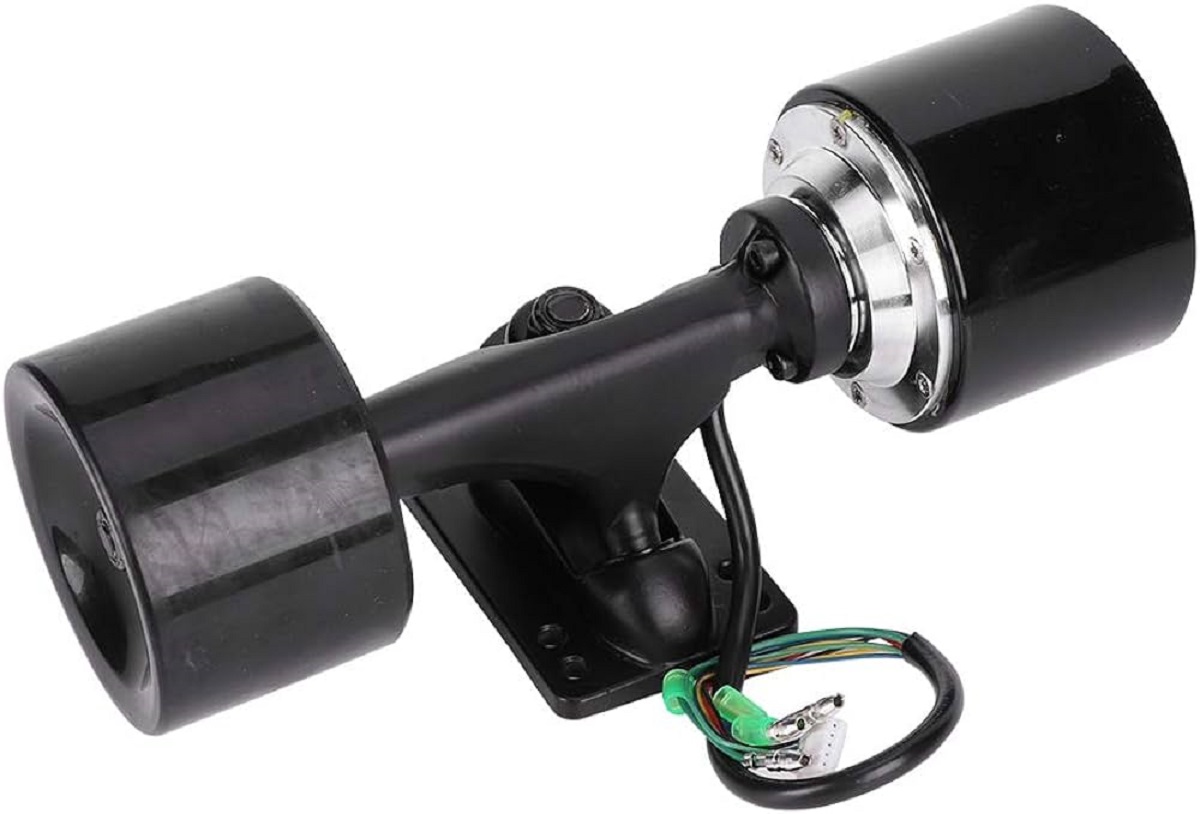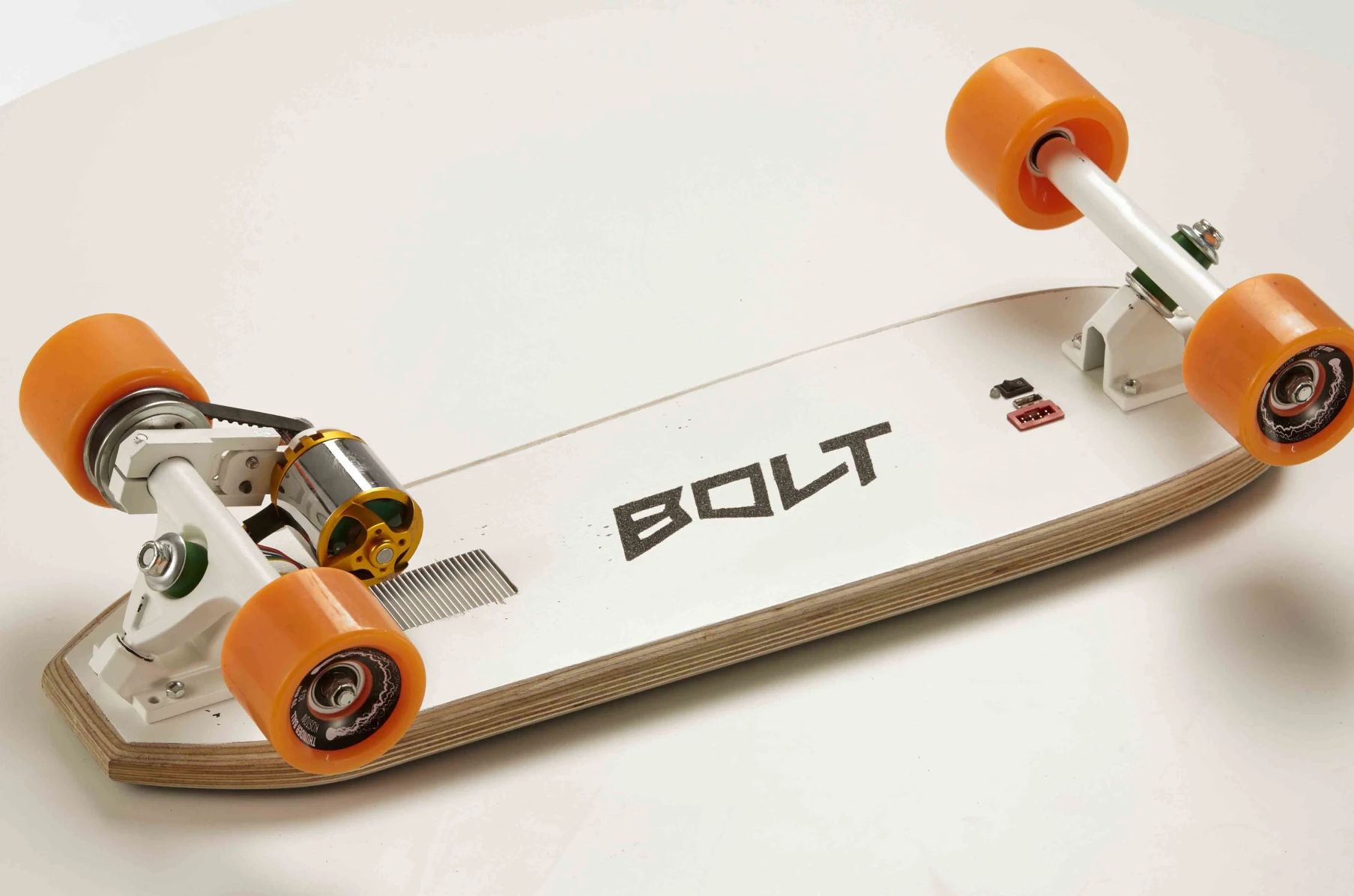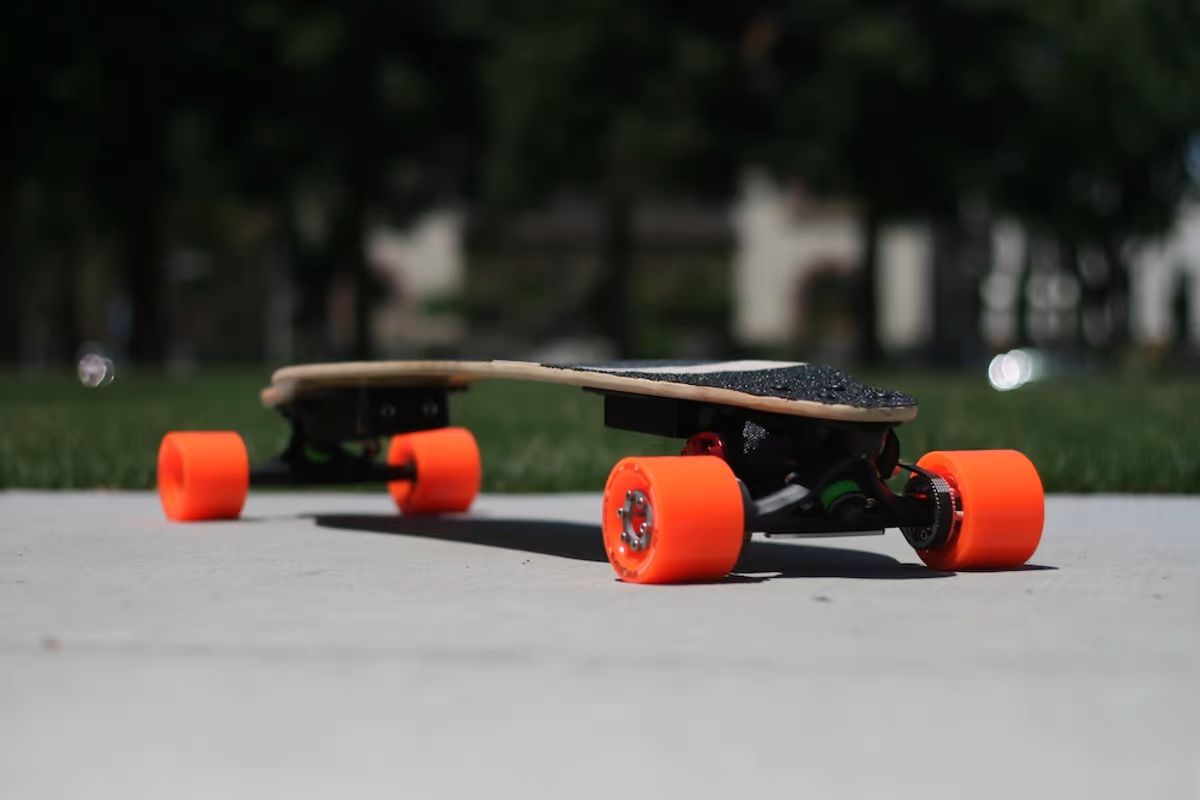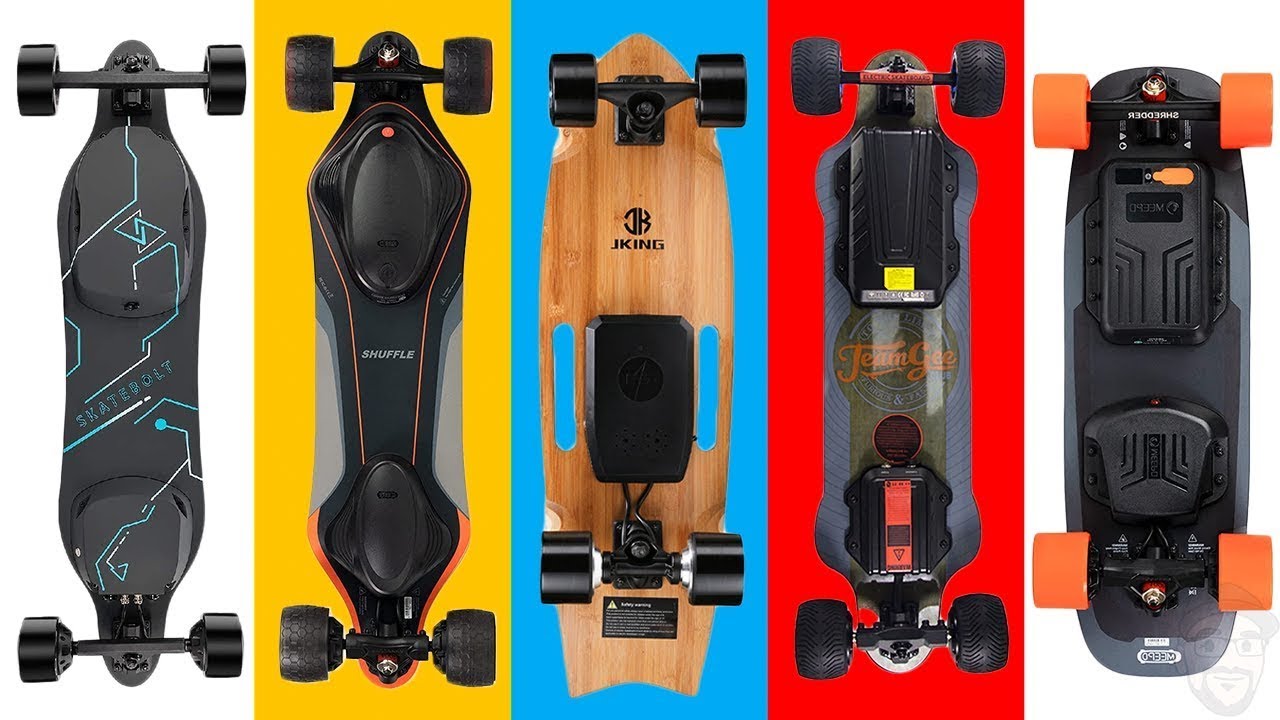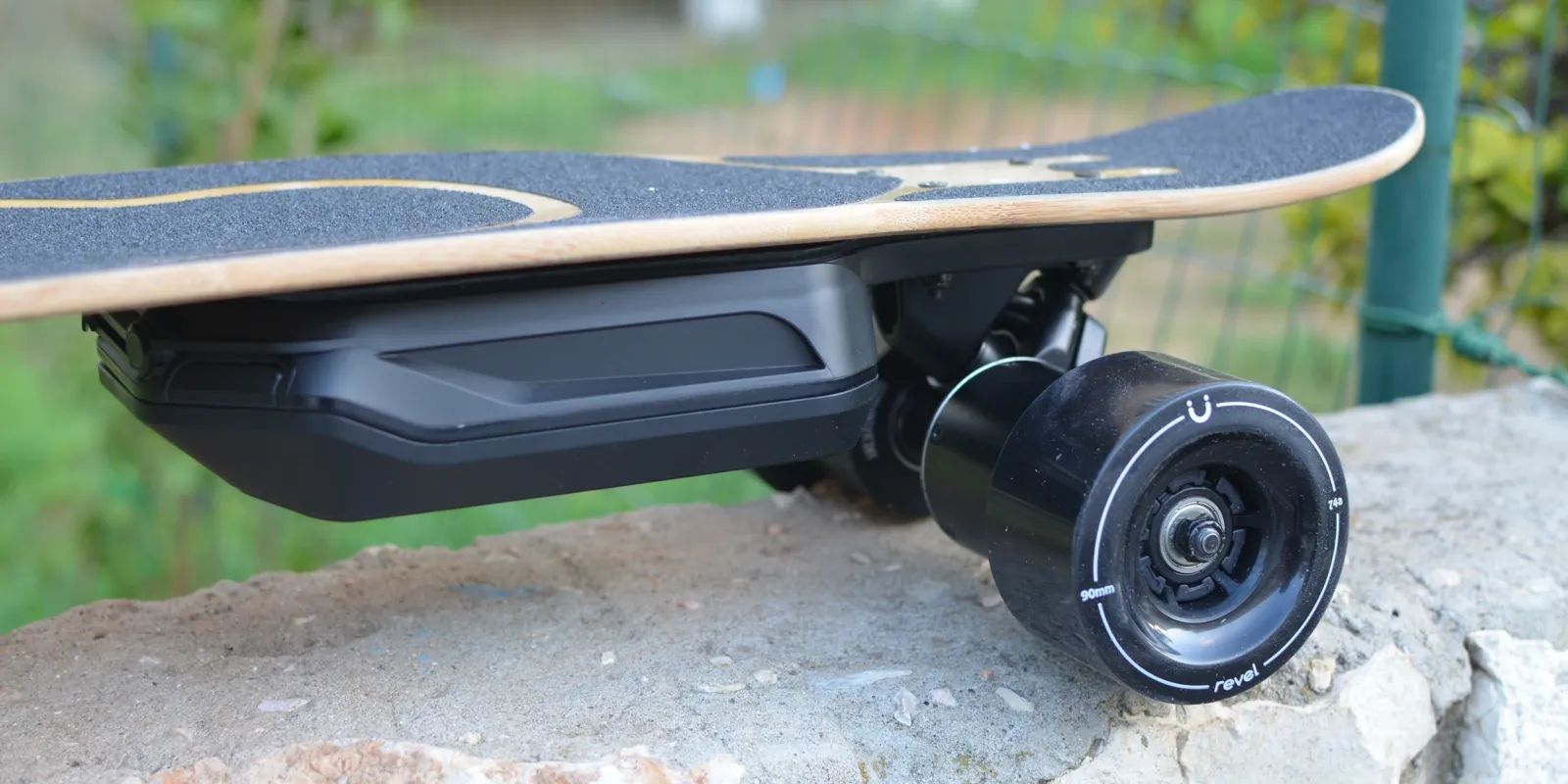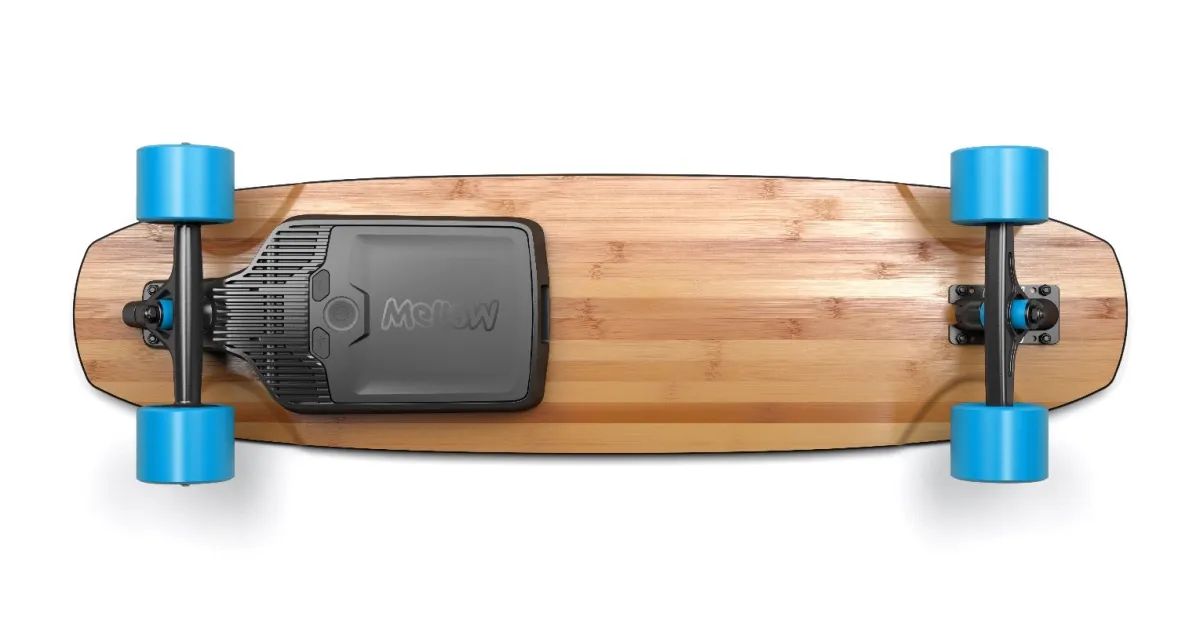Introduction
Welcome to the world of electric skateboards, where the thrill of riding combines with the convenience of an electric motor. Whether you’re a novice rider looking for a fun mode of transportation or an experienced boarder seeking an exhilarating new adventure, choosing the right motor for your electric skateboard is crucial.
Electric skateboards rely on motors to provide the necessary power to propel riders forward. These motors come in various types, each with its own set of advantages and considerations. In this article, we will explore some of the most common motor options available in the market and discuss their suitability for electric skateboards.
Before diving into the specifics of motor types, it’s important to consider your riding style and preferences. Factors such as speed, torque, and range will play a significant role in determining the motor that will best suit your needs. Additionally, it’s essential to determine whether you prefer a single motor setup or a dual motor setup, as this will impact the performance of your electric skateboard.
Throughout this article, we will examine the features and considerations associated with brushless DC (BLDC) motors, direct-drive motors, belt-drive motors, gear-drive motors, and hub motors. Each motor type has its own unique characteristics that will influence the overall performance of your electric skateboard. From power output and torque capabilities to efficiency and control systems, we’ll analyze each aspect to help you make an informed decision.
So, whether you’re looking for speed and power, or prefer a smoother and quieter ride, joining us on this journey will provide you with the knowledge needed to select the motor that matches your desired experience. Let’s dive into the details and explore which motor option is most suitable for your electric skateboard.
Brushless DC (BLDC) Motors
One of the most popular motor choices for electric skateboards is the brushless DC (BLDC) motor. Unlike traditional brushed motors, BLDC motors eliminate the need for brushes and commutators, resulting in improved efficiency and durability.
BLDC motors operate using electronic commutation, where the coils are energized in a specific sequence, controlled by an electronic controller. This precise control allows for smoother acceleration, better speed control, and increased overall performance.
One of the key advantages of BLDC motors is their high power-to-weight ratio. With their compact design, they can deliver impressive power output while keeping the weight of the motor to a minimum. This is particularly important for electric skateboards as lightweight components contribute to better maneuverability and increased range.
Another notable feature of BLDC motors is their ability to provide instant torque. This quick response ensures immediate acceleration, offering a dynamic and exhilarating riding experience. Additionally, BLDC motors typically have a higher top speed compared to other motor types, allowing riders to reach greater velocities.
BLDC motors also offer superior efficiency, converting a higher percentage of electrical power into mechanical power compared to brushed motors. This increased efficiency translates into a longer battery life and extended riding range on a single charge. With their low power consumption, BLDC motors are an ideal choice for riders looking for an electric skateboard that can go the distance.
When it comes to maintenance, BLDC motors require minimal upkeep. Since they lack brushes, there is no need for periodic brush replacement, reducing the maintenance costs and ensuring smoother operation over time.
However, one consideration with BLDC motors is their higher initial cost compared to brushed motors. The advanced technology and electronic control systems make them slightly more expensive. Nevertheless, the added benefits and performance make them a popular choice among electric skateboard enthusiasts.
In summary, brushless DC (BLDC) motors offer exceptional power, efficiency, and torque for electric skateboards. Their lightweight design, high power-to-weight ratio, and quick response make them an ideal choice for riders seeking a thrilling and efficient ride. Though they may come at a slightly higher cost, the overall performance and maintenance advantages justify the investment. Whether you’re a beginner or an experienced rider, a BLDC motor will undoubtedly enhance your electric skateboarding experience.
Direct-Drive Motors
Direct-drive motors are a popular choice for electric skateboards due to their simplicity, reliability, and smooth operation. As the name suggests, these motors directly drive the wheel without the need for any additional transmission components such as belts or gears.
One of the key advantages of direct-drive motors is their high torque output. The absence of additional components allows for a direct transfer of power from the motor to the wheel, resulting in excellent torque characteristics. This makes direct-drive motors well-suited for riders who enjoy climbing steep inclines or require the extra power to navigate rough terrains.
Another benefit of direct-drive motors is their silent operation. Since there are no belts or gears involved, the motor produces minimal noise, providing a quieter and more enjoyable riding experience. Additionally, the absence of moving parts in the transmission system reduces the overall vibrations, resulting in a smoother ride.
Direct-drive motors are also known for their durability. The absence of belts or gears means there are fewer components that can wear out or break over time. This reduces the likelihood of maintenance issues and ensures a longer lifespan for the motor.
For riders who prioritize simplicity and ease of use, direct-drive motors are an excellent choice. Since there are no additional transmission components, the setup process is straightforward and requires fewer adjustments. This makes it easier for riders to maintain and customize their electric skateboards according to their preferences.
However, it’s important to note that direct-drive motors tend to be slightly heavier compared to other motor types. The absence of transmission components means that all the weight is concentrated in the motor itself. While this may slightly affect the overall maneuverability of the skateboard, the increased torque and smooth operation more than make up for it.
In summary, direct-drive motors offer high torque, silent operation, and durability for electric skateboards. Their simplicity, reliability, and smooth ride make them a popular choice among riders. With minimal maintenance requirements and a focus on power delivery, direct-drive motors are ideal for riders who value performance and ease of use. Whether you’re conquering hills or cruising on flat terrain, a direct-drive motor will provide the power and reliability you need for an enjoyable electric skateboarding experience.
Belt-Drive Motors
Belt-drive motors have become a common choice among electric skateboard enthusiasts for their versatility and flexibility. Utilizing a system of belts and pulleys, these motors offer a unique combination of power, customization options, and smooth ride characteristics.
One of the key advantages of belt-drive motors is their ability to deliver high torque. The use of a belt and pulley system allows for a larger gear ratio, resulting in increased torque output. This is particularly beneficial for riders who require quick acceleration or need to tackle challenging terrains.
Another advantage of belt-drive motors is their flexibility in terms of customization. The belt and pulley system provides the ability to change the gear ratio, allowing riders to optimize the performance of their electric skateboard based on their preferences. This versatility makes belt-drive motors a popular choice among riders who enjoy fine-tuning their boards for specific riding styles.
One notable feature of belt-drive motors is their ability to provide a smoother and more comfortable ride. Since the motor is not directly attached to the wheel, vibrations and road imperfections are absorbed by the belt and pulley system, resulting in a reduced impact on the rider. This makes belt-drive motors an excellent choice for those who prioritize ride quality and comfort.
In terms of maintenance, belt-drive motors may require periodic belt replacements. Over time, belts can wear out due to regular use and exposure to external elements. However, belt replacements are relatively straightforward and inexpensive, and with proper care, the motor can provide reliable performance for an extended period.
One consideration to keep in mind is the additional weight introduced by the belt and pulley system. The extra components can add some weight to the skateboard, which may slightly impact maneuverability. However, the increased torque and customizable performance outweigh this minor drawback for many riders.
In summary, belt-drive motors offer high torque, customization options, and a smooth ride for electric skateboards. The ability to fine-tune the gear ratio provides riders with the flexibility to optimize their board’s performance, while the belt and pulley system absorbs vibrations for a comfortable riding experience. Though belt replacements may be necessary over time, the overall versatility and performance make belt-drive motors a popular choice among electric skateboard enthusiasts. Whether you’re chasing speed, tackling challenging terrains, or seeking a smoother ride, a belt-drive motor can deliver the power and customization options you seek.
Gear-Drive Motors
Gear-drive motors offer a unique combination of power and efficiency for electric skateboards. These motors utilize a system of gears to transfer power from the motor to the wheels, providing enhanced torque and overall performance.
One of the standout advantages of gear-drive motors is their exceptional torque output. The gear system allows for increased torque multiplication, enabling the motor to generate a higher force to propel the skateboard forward. This makes gear-drive motors particularly suitable for riders who emphasize acceleration and the ability to tackle steep hills with ease.
In addition to high torque, gear-drive motors also offer excellent efficiency. The gear system allows for better power transfer from the motor to the wheels, minimizing energy loss and maximizing the overall performance of the electric skateboard. This improved efficiency translates to a longer riding range and extended battery life, providing riders with more time on their boards without the need for recharging.
Another advantage of gear-drive motors is their durability and reliability. The gear system provides added protection and stability, reducing the risk of damage to the motor. Compared to other motor types, gear-drive motors are known for their robust construction, ensuring consistent performance even in demanding riding conditions.
It’s important to note that gear-drive motors can generate more noise compared to other motor types such as direct-drive or belt-drive motors. The gear mechanism produces a slight humming sound while in operation. However, the noise level is generally not excessive and does not significantly impact the overall riding experience.
In terms of maintenance, gear-drive motors require periodic inspection and lubrication to ensure smooth operation. The gear system should be checked regularly for wear and tear, and lubricants should be applied to keep the gears running smoothly. While maintenance is necessary, it is relatively straightforward and helps to prolong the lifespan of the motor.
Lastly, gear-drive motors may add some weight to the electric skateboard due to the additional components. This can impact maneuverability to some extent, but the increased torque and power output provided by gear-drive motors make them a compelling choice for riders seeking optimal performance.
In summary, gear-drive motors offer high torque, efficiency, and durability for electric skateboards. The gear system enhances power transfer and allows for excellent acceleration and climbing capabilities. While they may produce slightly more noise and add some weight, the benefits of superior torque and efficiency outweigh these minor drawbacks. If you prioritize acceleration, power, and long riding range, a gear-drive motor can provide the performance and reliability you’re looking for in an electric skateboard.
Single Motor vs Dual Motor
When choosing an electric skateboard, one of the key decisions to make is whether to opt for a single motor setup or a dual motor setup. Each configuration has its own advantages and considerations, and understanding the differences between the two can help you determine the best option for your riding style and preferences.
A single motor setup, as the name implies, utilizes a single motor to power the skateboard. This configuration offers simplicity and affordability, making it a popular choice for beginner riders. With a single motor, the skateboard is generally lighter and more maneuverable, allowing for greater agility and control.
Single motor setups are suitable for riders who prioritize ease of use and casual riding. They provide sufficient power for everyday commuting or leisurely cruising on flat terrain. However, if you are looking for more speed, acceleration, or enhanced climbing capabilities, a single motor may not provide the desired performance.
On the other hand, dual motor setups utilize two motors, one connected to each wheel. This configuration significantly increases power output and torque, resulting in improved performance and the ability to tackle steeper inclines with ease. Dual motor setups are favored by riders who seek greater speed, faster acceleration, and enhanced overall capabilities.
Dual motor electric skateboards offer a more thrilling and exhilarating riding experience, especially for riders who enjoy a more aggressive riding style. The increased power and torque distribution between the two motors provide better stability and control, making them well-suited for riders seeking high-performance electric skateboards.
However, it’s important to consider that dual motor setups are generally heavier and can affect maneuverability compared to single motor setups. The additional motor and components contribute to a slightly bulkier and less nimble skateboard. This can be a trade-off to consider, especially if you value portability and ease of carrying your electric skateboard.
Cost is another factor to take into account when choosing between a single motor and dual motor setup. Dual motor setups tend to be more expensive due to the additional motor and associated components. However, the enhanced performance and capabilities they offer make them a worthwhile investment for riders who desire a more powerful and dynamic riding experience.
In summary, the choice between a single motor and dual motor setup depends on your riding style and preferences. Single motor setups are ideal for casual riders and those seeking simplicity and affordability. On the other hand, dual motor setups are suited for riders who crave more power, speed, and aggressive riding capabilities. Consider factors such as terrain, desired performance, maneuverability, and budget when making your decision. By choosing the right motor setup, you can create an electric skateboard that matches your riding style and delivers an unrivaled experience.
Hub Motors
Hub motors have gained popularity in the electric skateboard community due to their unique design and compactness. In a hub motor configuration, the motor is integrated into the wheel itself, providing a sleek and streamlined appearance.
One of the key advantages of hub motors is their simplicity and ease of use. With the motor embedded in the wheel, there is no need for external belts, gears, or pulleys. This results in a cleaner and more minimalist design, reducing the chances of mechanical failures and making maintenance relatively straightforward.
Hub motors offer a quiet and smooth riding experience. The absence of external transmission components such as belts or gears eliminates sources of noise and vibrations, resulting in a quieter ride. Additionally, hub motors provide a more natural and responsive feel, providing riders with a smooth acceleration and deceleration.
Another benefit of hub motors is their compactness and weight distribution. By integrating the motor into the wheel, the weight is evenly distributed throughout the skateboard. This enhances stability and maneuverability, allowing riders to navigate corners, curves, and obstacles with greater control and ease.
Hub motors also offer regenerative braking capabilities. When riders apply the brakes, the motor acts as a generator, converting the kinetic energy of the skateboard into electrical energy that can be used to recharge the battery. This regenerative braking feature helps maximize the riding range and efficiency of electric skateboards.
It’s worth noting that hub motors generally have lower torque compared to other motor types. While they provide sufficient power for everyday commuting and casual riding, they may not be the best choice for riders who require quick acceleration or plan to tackle steep inclines regularly.
In terms of customization, hub motors may have limited options compared to other motor types. Since the motor is integrated into the wheel, changing the gear ratio or motor specifications may be more challenging or even impossible. However, many manufacturers offer different hub motor options with varying power outputs and sizes to cater to a wide range of rider preferences.
Ultimately, hub motors offer a sleek and minimalist design, quiet operation, and efficient weight distribution for electric skateboards. With their simplicity and lower maintenance requirements, they are an excellent choice for riders seeking a hassle-free and responsive riding experience. While they may have some limitations in terms of torque and customization, hub motors provide a dependable and enjoyable riding experience for riders of all skill levels.
Motor Power
Motor power is a critical factor to consider when choosing an electric skateboard. The power of the motor directly impacts the speed, acceleration, and overall performance of the skateboard. Understanding motor power specifications will help you select a motor that aligns with your desired riding experience.
The power of an electric skateboard motor is typically measured in watts (W) or kilowatts (kW). Higher power ratings indicate a more robust motor with greater capabilities. However, it’s important to note that excessive power may not always be necessary or practical, depending on your riding style and intended use.
For casual riders or those seeking a relaxed cruising experience, motors with lower power ratings, typically ranging from 500W to 1000W, can provide sufficient power. These motors offer decent acceleration and a comfortable top speed suitable for commuting on flat terrain or leisurely rides.
For more adventurous riders and those seeking faster speeds or the ability to tackle steeper inclines, motors with higher power ratings come into play. Motors in the 1000W to 2000W range are popular among these riders. These motors provide faster acceleration, higher top speeds, and enhanced climbing capabilities, allowing for a more thrilling and dynamic ride.
Extreme riders, off-road enthusiasts, and those seeking maximum power and performance may opt for motors with power ratings exceeding 2000W. These motors deliver exceptional acceleration, blistering top speeds, and the ability to conquer the most challenging terrains. However, it’s important to exercise caution and ensure you have the necessary skill and experience to handle the power of such motors.
It’s essential to consider your own skill level and intentions for electric skateboarding when selecting motor power. If you are a beginner or plan to mostly use your skateboard for commuting or leisurely rides, a motor with lower to medium power can fulfill your needs. On the other hand, experienced riders, thrill-seekers, or those who plan to ride in hilly areas may require the higher power output of a more robust motor.
Keep in mind that motor power alone is not the sole determining factor of overall performance. Other factors such as torque, gearing, and wheel size play a crucial role in the skateboard’s ability to accelerate, maintain speed, and navigate various terrains. It’s important to consider the entire system and how all the components work together to deliver the desired riding experience.
In summary, motor power is a vital consideration when choosing an electric skateboard. Motor power directly impacts acceleration, top speed, and climbing capabilities. Select a motor with a power rating that aligns with your skill level, riding style, and intended use. Whether you prefer a casual cruising experience or crave maximum power and performance, choosing the appropriate motor power will ensure an enjoyable and fulfilling riding adventure.
Motor Torque
Motor torque is an essential factor to consider when evaluating the performance and rideability of an electric skateboard. Torque refers to the twisting force that the motor generates to propel the skateboard forward. The torque of a motor directly influences the acceleration, climbing capability, and overall power of the skateboard.
A higher torque value indicates that the motor can deliver more force to the wheels, resulting in quicker acceleration and improved ability to climb hills or handle challenging terrains. Electric skateboards with higher torque motors are ideal for riders who prioritize quick starts, aggressive acceleration, and the ability to conquer steep inclines with ease.
In contrast, electric skateboards with lower torque motors may offer a more gradual and smooth acceleration. These skateboards are well-suited for riders who prefer a relaxed cruising experience or plan to ride predominantly on flat terrains.
It’s important to strike a balance when selecting motor torque, as excessive torque may lead to overly aggressive acceleration, which can be challenging for beginners or riders seeking a more stable riding experience. On the other hand, insufficient torque may result in sluggish acceleration, limiting the skateboard’s ability to navigate inclines or provide the desired level of power.
In addition to power, torque is influenced by factors such as the gear ratio, motor size, and the overall design of the drivetrain. These factors determine how efficiently the motor’s torque is translated into the rotation of the wheels. Therefore, it’s crucial to consider the entire drivetrain system, including the motor, gear ratio, and wheel size, when evaluating the torque capabilities of an electric skateboard.
When selecting an electric skateboard, evaluate your riding style, intended terrain, and desired level of acceleration to determine the appropriate torque. If you plan to ride in hilly areas or desire fast and aggressive acceleration, a higher torque motor will provide the necessary power. For casual riders or those who prefer a more relaxed pace, a motor with moderate torque can deliver a smooth and enjoyable experience.
It’s worth noting that torque alone does not determine the top speed of the electric skateboard. Other factors, such as motor power, aerodynamics, and weight distribution, also come into play. Therefore, it’s crucial to consider all these factors in conjunction to ensure the desired performance and riding experience.
In summary, motor torque is a critical consideration when choosing an electric skateboard. It directly affects the acceleration and climbing capability of the skateboard. Selecting a motor with an appropriate torque for your riding style and intended terrain will ensure optimal performance. Whether you seek aggressive acceleration, smooth cruising, or the ability to conquer challenging inclines, finding the right motor torque will contribute to an exciting and enjoyable electric skateboard experience.
Motor Efficiency
Motor efficiency is a crucial factor to consider when evaluating the performance and overall effectiveness of an electric skateboard. Efficiency refers to how effectively the motor converts electrical power into mechanical power to propel the skateboard forward.
A highly efficient motor is desirable as it maximizes the utilization of battery power, resulting in longer riding range and extended battery life. With a more efficient motor, riders can enjoy extended periods of riding without the need for frequent recharging.
Efficiency is typically measured as a percentage and represents the ratio of mechanical power output to electrical power input. A higher efficiency rating indicates that a greater portion of the electrical energy is converted into useful mechanical work, while less energy is wasted as heat or other inefficiencies.
Efficient motors not only offer better battery life but also contribute to a more sustainable and environmentally friendly ride. By minimizing energy loss and maximizing power utilization, efficient motors reduce the overall energy consumption and carbon footprint of the electric skateboard.
The efficiency of a motor is influenced by various factors, including the design and materials used, as well as the control algorithms implemented in the motor’s electronic controller. Modern brushless motors, for example, are known for their high efficiency compared to traditional brushed motors.
In addition to the motor itself, other components of the electric skateboard’s drivetrain, such as the gearing and wheel size, can also impact overall efficiency. Proper gear ratios and wheel sizes can optimize power delivery and minimize energy waste, further enhancing the overall efficiency of the system.
It’s important to note that motor efficiency can vary based on the operating conditions and load placed on the motor. Higher efficiency may be achieved when the motor is operating near its optimal power output and within its specified performance range. Therefore, evaluating efficiency ratings in relevant operating conditions is crucial in determining the overall efficiency of the motor.
When choosing an electric skateboard, consider your intended usage, riding style, and desired riding range. If you prioritize long rides and extended battery life, selecting a motor with high efficiency will help you achieve these goals. Furthermore, efficient motors often generate less heat during operation, contributing to a more reliable and durable system.
In summary, motor efficiency plays a significant role in the performance and sustainability of an electric skateboard. Highly efficient motors maximize power utilization, resulting in longer riding range and extended battery life. By choosing a motor with high efficiency, riders can enjoy longer rides while minimizing the environmental impact. Consider your riding needs and desired battery life when selecting a motor with optimal efficiency for your electric skateboard.
Motor Control Systems
Motor control systems are a critical component of electric skateboards, responsible for managing the speed, acceleration, and overall performance of the motor. These systems play a key role in providing riders with a smooth and responsive riding experience.
There are various types of motor control systems utilized in electric skateboards, each with its own characteristics and advantages. Some of the commonly used motor control systems include pulse width modulation (PWM), field-oriented control (FOC), and sensorless control.
Pulse width modulation (PWM) is a widely used control system that regulates the power supplied to the motor by rapidly switching the voltage on and off. This control method allows for precise control over the motor’s speed and torque output, resulting in smooth acceleration and deceleration. PWM control also contributes to better energy efficiency, as power is only supplied when needed.
Field-oriented control (FOC) is another control system that offers superior control and performance. This control method involves aligning the motor’s magnetic field with the desired direction of rotation to optimize torque output. FOC control systems provide excellent torque and speed control, resulting in enhanced responsiveness and efficiency.
Sensorless control is a control system that eliminates the need for external sensors to measure rotor position. Instead, sensorless control systems rely on algorithms and feedback from the motor itself to determine the rotor position. This control method reduces complexity and cost by eliminating the need for additional sensors, while still delivering reliable and precise control over motor operation.
Motor control systems are typically implemented through an electronic controller that manages the input signals from the rider and translates them into appropriate adjustments to the motor’s power output. These controllers can vary in complexity and features, with some offering advanced functionalities such as regenerative braking, speed modes, or app connectivity for customization and monitoring.
One consideration when evaluating motor control systems is the user-friendliness and accessibility of the controls. Ideally, the control system should provide intuitive and easy-to-use controls for adjusting speed, acceleration, and braking. Some electric skateboards offer remote controls or smartphone apps that allow riders to adjust settings on the go.
It’s essential to consider the motor control system’s compatibility with the specific motor being used in the electric skateboard. Different motors may have specific requirements or recommendations for the control systems that can effectively drive them. Ensuring compatibility between the motor and the control system will help optimize performance and prevent potential issues.
In summary, motor control systems directly impact the performance and responsiveness of electric skateboards. PWM, FOC, and sensorless control systems are commonly used to regulate the motor’s speed, acceleration, and torque output. When selecting an electric skateboard, consider the user-friendliness of the control system and its compatibility with the motor. A well-designed and properly implemented motor control system will ensure a smooth and enjoyable riding experience, empowering riders to fully harness the capabilities of their electric skateboards.
Conclusion
Choosing the right motor for your electric skateboard is an essential decision that directly impacts the performance and overall riding experience. Understanding the different types of motors available, such as brushless DC (BLDC) motors, direct-drive motors, belt-drive motors, gear-drive motors, and hub motors, allows you to select the optimal motor for your needs.
BLDC motors offer high power-to-weight ratio, instant torque, and excellent efficiency, making them a popular choice for electric skateboards. Direct-drive motors provide simplicity, reliability, and a quiet ride, while belt-drive motors offer versatility, customization options, and a smooth riding experience. Gear-drive motors deliver high torque and enhanced climbing capability, and hub motors offer a sleek design, quiet operation, and efficient weight distribution.
When considering the motor setup, the choice between a single motor and dual motor configuration depends on your riding style and preferences. Single motor setups offer simplicity and affordability, while dual motor setups provide increased power, speed, and performance.
In addition to motor type and setup, factors such as motor power, torque, efficiency, and control systems contribute to the overall performance and ride quality of an electric skateboard. Motor power should be chosen based on your intended usage and desired level of performance, while torque determines acceleration and climbing capability.
Motor efficiency directly impacts battery life and sustainability, ensuring a longer riding range and minimized energy consumption. Finally, motor control systems regulate the speed, acceleration, and responsiveness of the motor, enhancing the overall ride experience.
By carefully considering the various factors and understanding your own riding style and preferences, you can select the motor that perfectly matches your needs. Whether you’re a casual rider seeking a comfortable and relaxed ride, or an adrenaline junkie craving high speed and performance, there is an electric skateboard motor ready to propel you on your next adventure.







